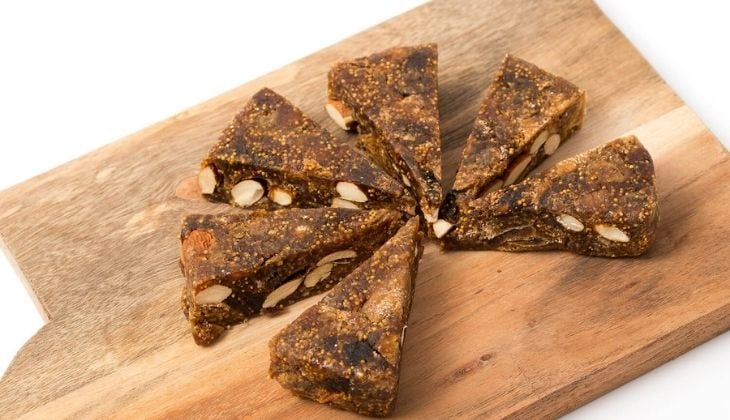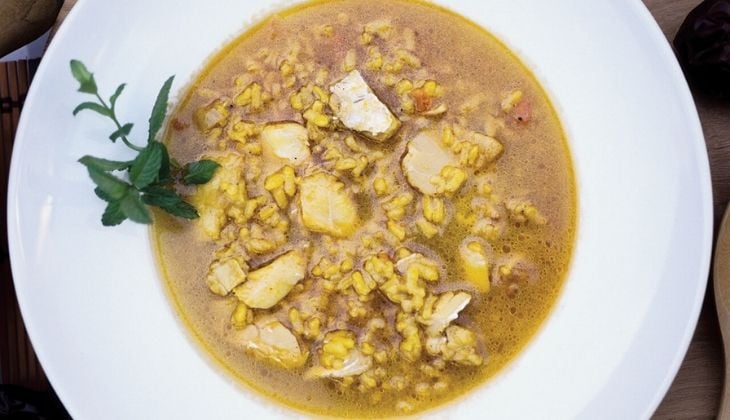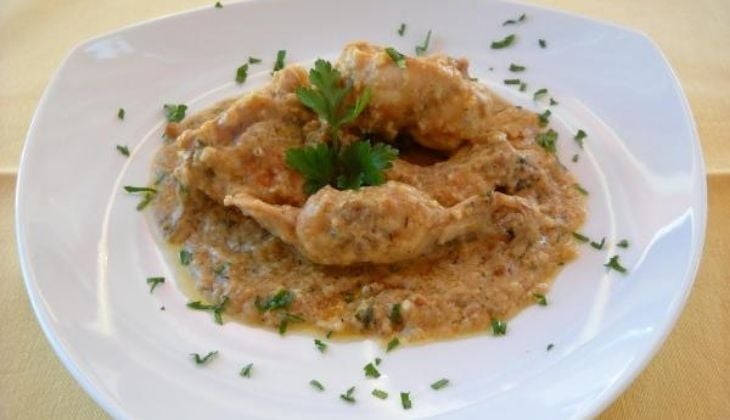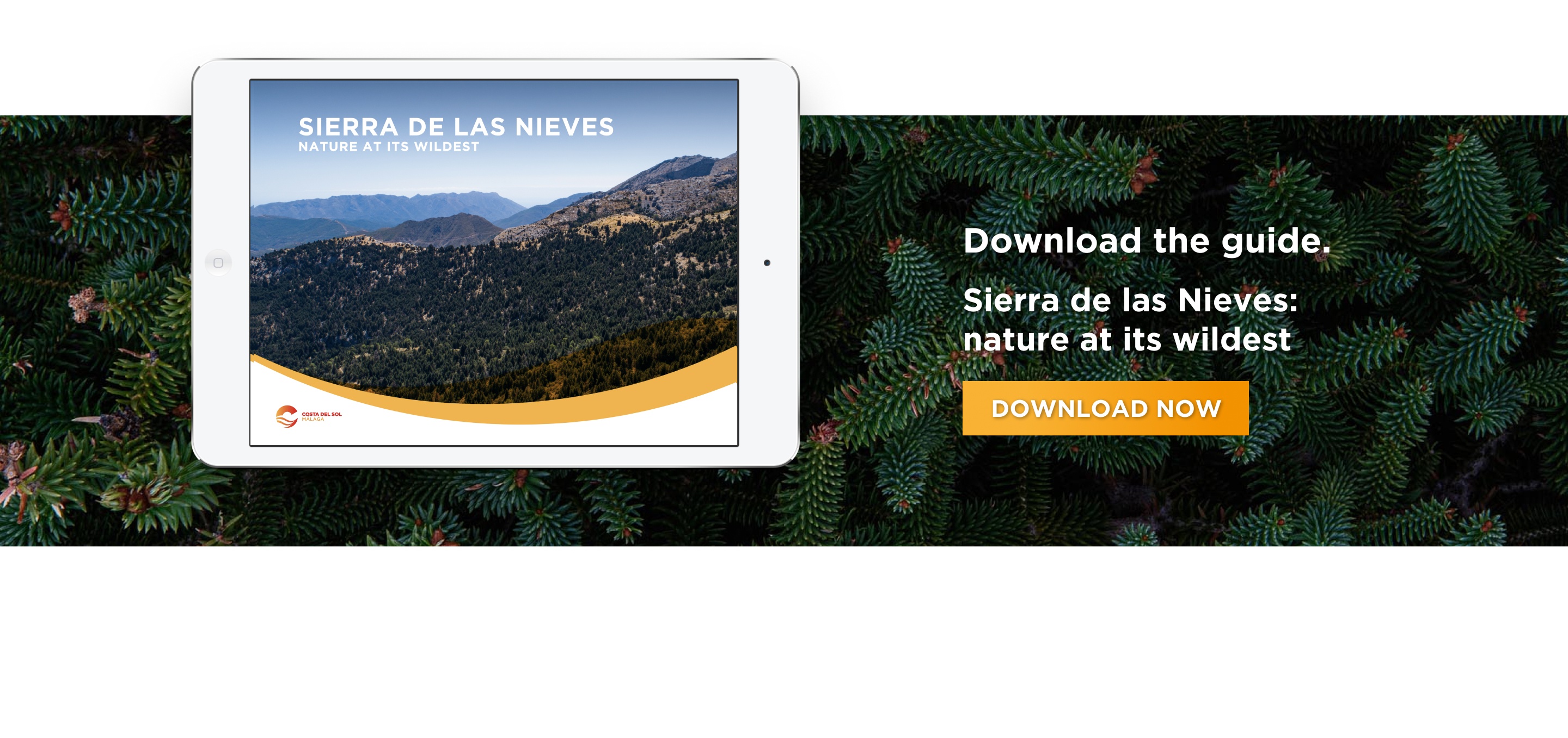Eating out in Sierra de las Nieves in the midst of its stunning scenery is an experience like no other. Spanish fir, Portugese oak and cork oak trees populate a mountainscape that is dotted with the prettiest whitewashed villages where traditions that date back centuries continue to inspire the gastronomy.
The agricultural land bears a large variety of fruits, vegetables and legumes that define the gastronomy of Sierra de las Nieves, with wild produce foraged from the mountains used to enhance dishes. The traditional cookbook features plenty of meat and game, as well as olive oil. Artisanally made marinated olives, sausages and charcuterie are fine accompaniments to your meal, as are the wines and mosto (a fermented wine) made in places such as Yunquera and Tolox. If you’re interested in discovering the flavours that best define Sierra de las Nieves, you’re in the right place. Keep reading to see an overview of what you can expect to eat in each of the villages comprising this impressive mountainscape.
Sierra de las Nieves bite by bite
Ronda
In Ronda, game has been at the heart of the local diet since Moorish times. Many local dishes are defined by this cultural tradition as well as by the diverse flavours, ingredients and cooking techniques that were brought by the many different civilisations that have inhabited the area over the years. Rabbit is the game dish par excellence and in Ronda it is particularly good, whether it is paired with garlic or mushrooms or fried. You also have to try rabo de toro, bull tail stew and poultry dishes, such as chicken and partridge. Produce grown in the local land also makes a strong appearance in Ronda’s cuisine. The wonderful weather makes it the perfect place to plant the finest vegetables and legumes. Simple dishes such as broad beans with ham, haricot beans with morcilla, pumpkin and well-known gazpacho are elevated to new levels in the town.
Alozaina
The star of Alozaina’s cuisine is the table olive. But you can also try a wide range of other traditional local dishes, such as cod soup, porra con huevo (cold soup with egg), fig bread and soups made with bread and vegetables, such as caldos poncima. In terms of dessert, you can’t leave the village without trying rosquillas de arrope y miel.

Benahavís
Known as “the dining room of the Costa del Sol” due to its variety of quality bars and restaurants, Benahavís is known for the diversity of its cuisine. From restaurants serving international cookery and gastro bars where creative and design tapas are on the menu through to classic eateries showcasing the finest mountain cuisine, this municipality certainly doesn’t disappoint. The local cookbook is filled with dishes such as solomillo de cerdo aliñado (pork tenderloin), rabbit stew, lamb, venison and suckling pig.
Casarabonela
Aromatic plants grow in abundance around Casarabonela, which are used to give meat dishes the unmistakable flavour of the mountains. During your time in the village, make sure you try tasty dishes such as rabbit with garlic and chivo a la pastoril (kid stew). You will also have the opportunity to have lunch in an 18th century inn in the village.

Source: Diputación de Málaga
El Burgo
Like in other municipalities in Sierra de las Nieves, in El Burgo you will find plenty of soups made with bread and vegetables. If there is one dish that defines the village’s cuisine, it is without doubt sopa de los siete ramales, a delicious stew that will give you the energy you need to explore the mountainscape with its mountain goats and golden eagles.
Guaro
One of the gateways into Sierra de las Nieves natural park is Guaro, a village that emanates Andalusian charm. Kid stew, rabbit with almonds and traditional galipuche (a soup combining a mix of vegetables and sometimes meat) are just some of the specialities you can savour here. A haven for foodies.
Source: Recetas Gratis
Igualeja
The gastronomy in Igualeja comprises dishes from the mountains, such as gachas (a creamy dessert) and migas (dishes characterised by breadcrumbs) as well as other traditional dishes from the Malaga coastline, such as salmorejo and gazpacho. Malcocinado and kid stew are two of the stars of the local cookbook. In terms of desserts, mantecados are typical here (a sweet traditionally eaten at Christmas), borrachuelos (fried pastry with a pumpkin filling) and roscos (a sort of biscuit).
Istán
In the bars and restaurants in Istán you will find tasty stews and soups such as sopa de maíz, gazpachuelo, berza, migas, cooked soups, fried rabbit and salmorejo. If after all that you are left wanting something sweet, roscos de vino de alfajor will satisfy your craving.
Monda
The dish that best defines the cuisine in Monda is, without doubt, sopa mondeña. But Monda also boasts delicious olive oils and olives, which are served with traditional and tasty dishes made using kid meat, another of its ingredients par excellence. It’s also worth mentioning the cod soup and potaje de vigilia.
Ojén
Ojén is famed for its aguardiente. But that’s just the start of what the village has to offer. There are two museums dedicated to wine and olive oil, making it a must-visit on your gastronomic exploration of Sierra de las Nieves. Traditional cuisine here centres around produce such as legumes, vegetables, game, goat cheese, milk and fruits. Specialities include sopa jervía and sopa de caldo, which are made with stale bread, garlic, onion, pepper, tomatoes and other vegetables. Some of the most popular dishes featuring legumes are chicharos con arroz o fideos (chickpeas with rice or pasta), pipeao de habas (broad bean stew), bolo de hinojos (fennel and legumes), rice with cod and gazpacho served with grapes and almonds.

Parauta
Like in the rest of the region, in Parauta the cuisine is primarily defined by the produce of the land, such as meat (both farm-raised and game), vegetables, olive oil, flour and wine. The second factor influencing the cuisine are the seasons, not only because of the weather, but also because of the produce that is available at certain times of year: mushrooms in autumn, wild herbs (oyster thistle, fennel, wild asparagus and maidenstears) in spring. Specialities in Parauta include gazpacho, olla (stew), sopa hervida (bread soup) and tomato soup. The latter is usually served with clams, mussels, ham or muscatel grapes.
Serrato
Produce from the land, such as asparagus and oyster thistle, are used in Serrato’s most characteristic dishes, such as asparagus tortilla, available in three varieties (amarguero, moruno and triguero) and oyster thistle stew. Another local speciality is sopa hervida (or hervía, as it is known in the village). In terms of sweet treats, you can enjoy roscos de vino, roscos de naranja and tortas de azúcar sprinkled with toasted almonds.

Tolox
If you decide to stop off in Tolox during your time in Sierra de las Nieves, you’re in luck, as the most delicious traditional stews are made here. Chivo en caldereta (kid stew) is a dish par excellence, as are other soups and stews such as bolo, cazuela samandoña, gazpacho, maimones, sopeao, fried pumpkin and sausages. To finish off your meal with something sweet, you simply have to try the tortas de aceite and “pintao” fig bread.
Yunquera
In Yunquera, like the rest of the area, the cuisine is determined by the produce of the land, that is to say meat (both farm-raised and game), vegetables, olive oils, flour and wine. The products that define the village are wine, chestnuts, cheese, bread and chacina. With regards to traditional sweets the most popular ones are mantecados, roscos de vino and puff pastries filled with angel hair.
There is no better feeling than sitting down to an excellent meal after a day out hiking. Sierra de las Nieves offers all sorts of wonderful ways to enjoy its charms. You can take a dip in the river Verde as it passes through Istán or stay in the ancient hunting pavillon in Marqueses de Larios. And if you want to discover some local history, you simply have to visit Monda’s Arab castle, which is now a hotel, where you can try a tasty bowl of sopa mondeña. Before leaving these quaint villages behind, make sure you try some of the local sweet treats made with almonds, chestnuts, walnuts and honey. Your palate will thank you for it, particularly when washed down with a glass of aguardiente from Ojén.










